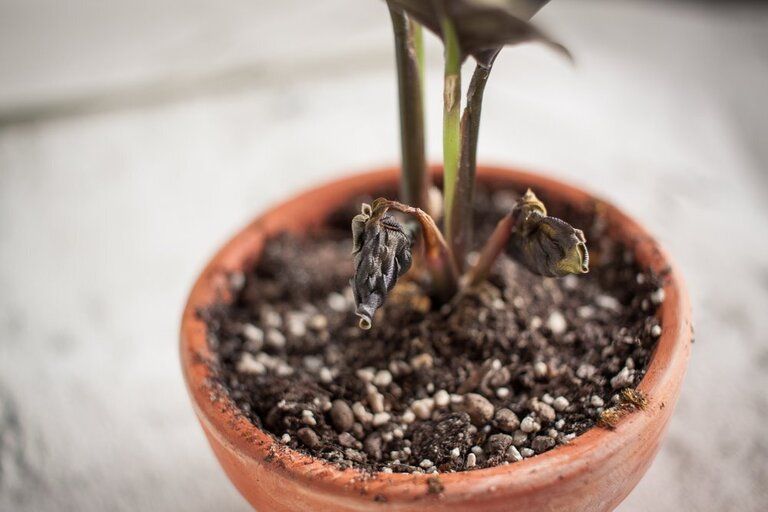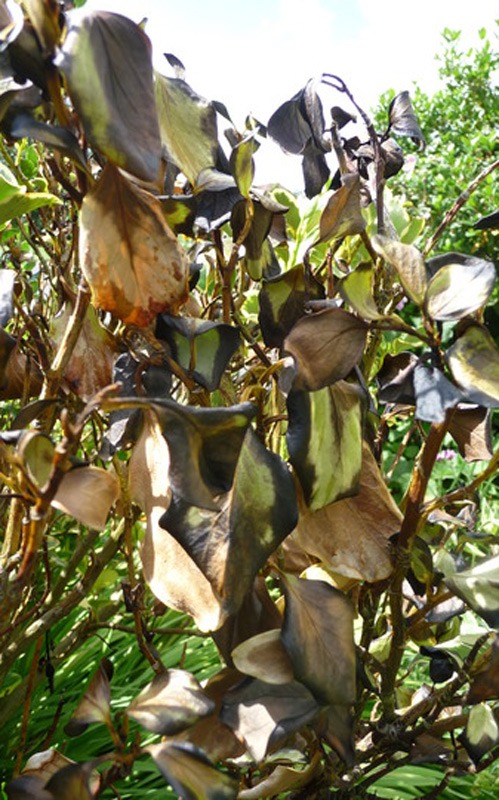Anyone with a garden in New Orleans knows that humidity is what Southerners do best. And though many plants are made to take the heat, excessive dampness is not always what they do best. Many times, dampness in plants can lead to root rot and though it can happen to any plant, root rot can be fixed and avoided with prevention.
As a proud bay plant owner, nothing is more heartbreaking than seeing your once-vibrant plant start to deteriorate before your eyes One of the most common issues that can plague bay plants is stem and root rot This potentially fatal disease can quickly take hold if left unchecked. However, with a few preventative measures, you can lower the risk of rot and keep your bay plant thriving for years to come.
In this comprehensive guide, we’ll cover the key causes of bay plant rot as well as effective solutions and prevention strategies you can implement right away Let’s dig in and protect your precious bay!
What Causes Rot in Bay Plants?
Bay plants are generally quite hardy and resistant to disease if their care needs are met properly. However, root and stem rot can still occur under certain conditions:
Overwatering: The #1 cause of bay plant rot is too much moisture around the roots and lower trunk. Bay trees have a moderate thirst and do best with weekly watering during the growing season. But soggy soil leads to fungal rot infections.
Poor Drainage: Bay plants need fast-draining soil. Excess water pooling around the roots due to heavy clay soils or poor drainage can also cause devastating rot diseases.
Root Damage: Accidental nicks, cuts and scrapes on roots make them more prone to invading fungal spores. Damaged roots are easy entry points for pathogens. Protect those roots!
Cold Weather: Chilly winters can damage roots and increase susceptibility to rot. Mulch around the base to insulate roots in cold climates.
Overcrowding: Plants spaced too closely together stay damp longer after watering or rain, upping the odds of rot developing. Allow ample air circulation.
Pests: Borers, weevils and leaf miners damage tissues and provide pathways for fungal spores to enter. Control pests before they can injure your plant.
Early Signs of Bay Plant Rot
Detecting rot issues early gives you the best chance of saving your bay plant. Be on the lookout for these common early symptoms:
-
Lower leaves start turning yellow or brown
-
Base of plant feels mushy or slimy
-
Foul, decaying odor from soil
-
Discolored lesions on stems and roots
-
Rapid leaf drop
-
Wilting leaves or new growth
-
Weak, stunted growth
At the first signs, you can still take action to treat the rot before major plant structures become infected. So inspect carefully and intervene ASAP.
Effective Solutions for Reversing Rot
If you catch it early, there are some effective solutions to rid your plant of rot and restore its vigor:
Improve Drainage: Add organic matter to heavy soils to lighten texture and install raised beds for improved drainage and aeration.
Reduce Watering: Allow the soil to completely dry out between waterings and water only when the top few inches become dry.
Space Plants Properly: Thin overcrowded bay trees and give them sufficient room to allow airflow between them.
Treat with Fungicide: Apply fungicidal drenches, such as copper sulfate, to kill fungal pathogens in afflicted plants.
Prune Diseased Areas: Removing infected roots and stems helps stop the rot from spreading further in your bay plant.
Consider Replanting: Severely rotten plants may need to be disposed of and replaced with a new, healthy bay tree.
Preventing Bay Plant Rot in the First Place
They say that an ounce of prevention is worth a pound of cure. This is especially true when it comes to protecting your bay trees from the scourge of rot diseases. Here are some proactive measures you can take:
-
Allow soil to dry between waterings; don’t overwater
-
Improve drainage if needed by amending clay-heavy soils
-
Avoid root damage through careful planting and cultivation
-
Space plants properly to encourage air circulation
-
Apply preventative fungicide drenches 1-2 times per year
-
Use tree wraps to protect trunks/stems during winter
-
Prune lower branches for airflow near soil level
-
Control destructive boring insects that can damage roots
-
Add protective wood chips/mulch around root zone
-
Check soil pH and maintain slightly acidic conditions bay trees prefer
Be Diligent Against Rot
Stem, crown and root rot represent formidable foes that can quickly doom your beloved bay plant. However, armed with the knowledge of what causes these diseases, early symptom detection, available treatment methods and preventive care, you can gain the upper hand in this battle. Remain vigilant in monitoring your bay tree’s health. At the first sign of trouble, take action to curb rot in its tracks. Your dutiful efforts will keep your bay healthy, hardy and primed to thrive.

What are the Signs of Root Rot?
Root rot is often hard to detect until a lot of damage has been done. Signs of root rot are slow growth, mushy stems, and wilting, yellow, distorted leaves (especially when the plant has been well watered, as wilting leaves can also be a sign of a dry plant). Usually the soil will smell rotten and the roots will appear to be reddish brown.
Once the symptoms of root rot are identified, the best thing one can do is remove the plant and replace it. Many times, the plant cannot correct course. Source: hutton.ac.uk
What is Root Rot?
Root rot is a plant disease that can be caused by overwatering, poor drainage, or by soil fungi. Like many plant diseases, root rot is hard to treat and prevention is the best way to avoid it.

Identify and Treat Blossom-End Rot in Tomatoes | Avoid BER Myths
FAQ
How do you prevent plant rot?
What is a natural anti rot for plants?
Can a plant recover from root rot?
How can the root rot disease be prevented?
